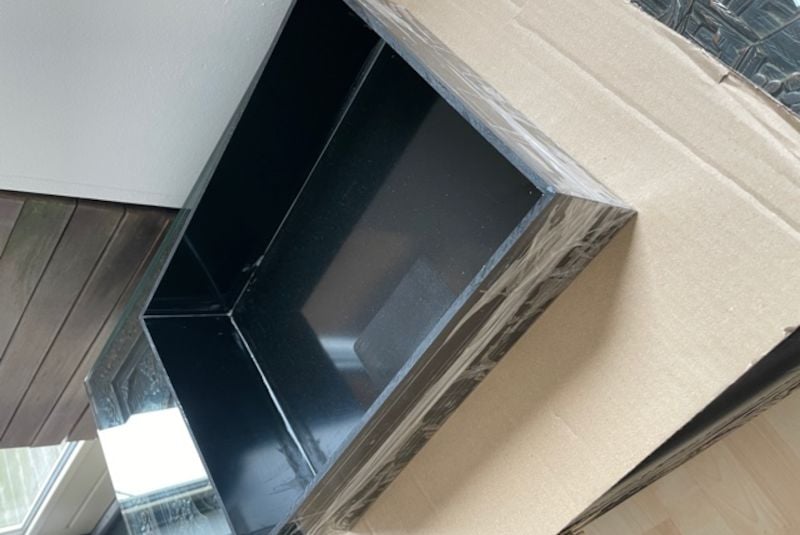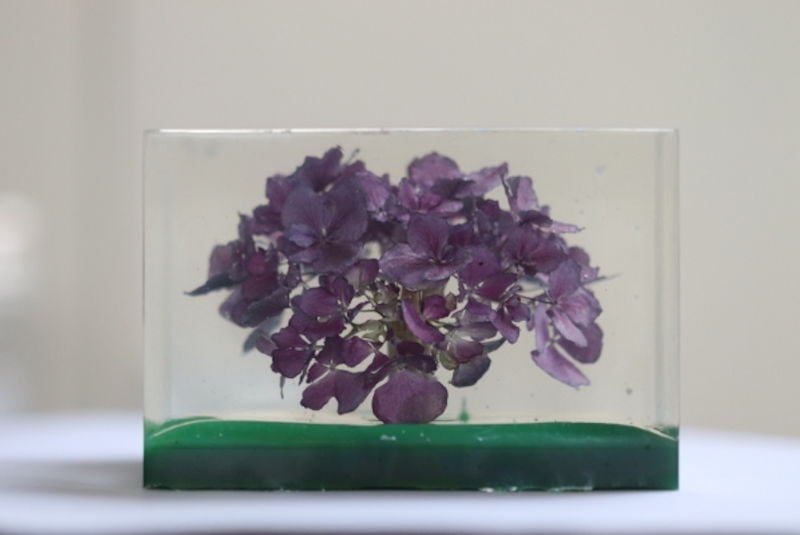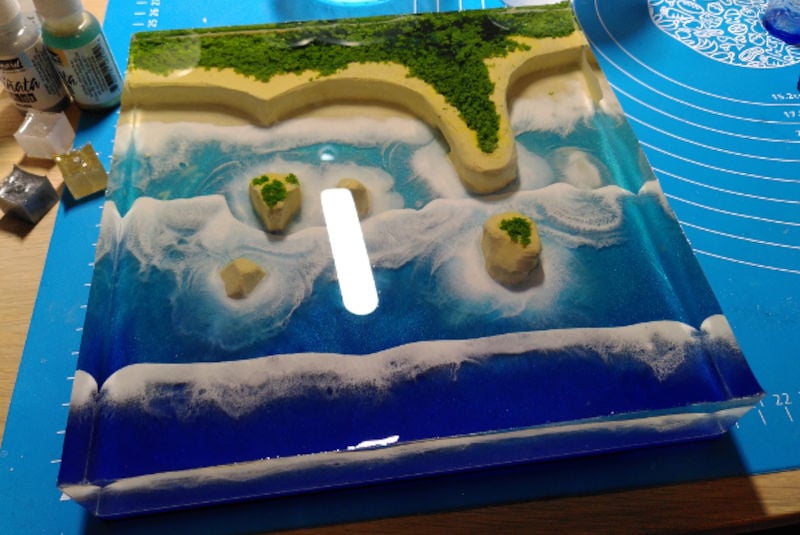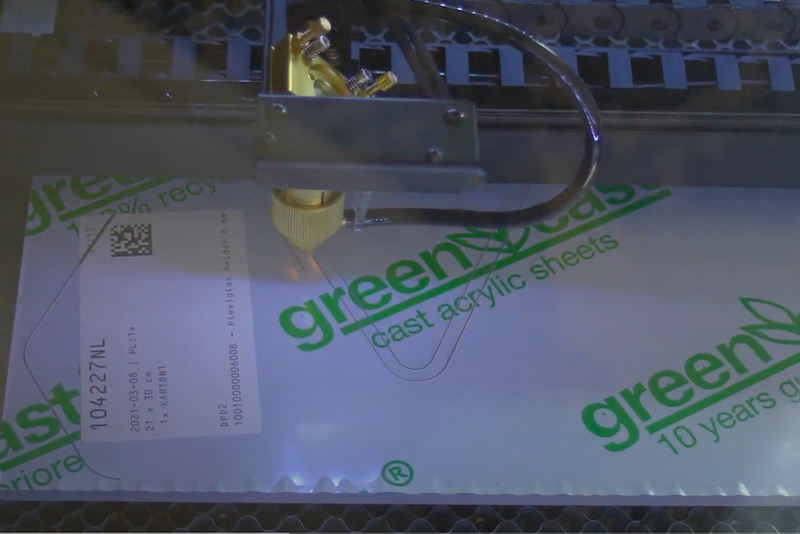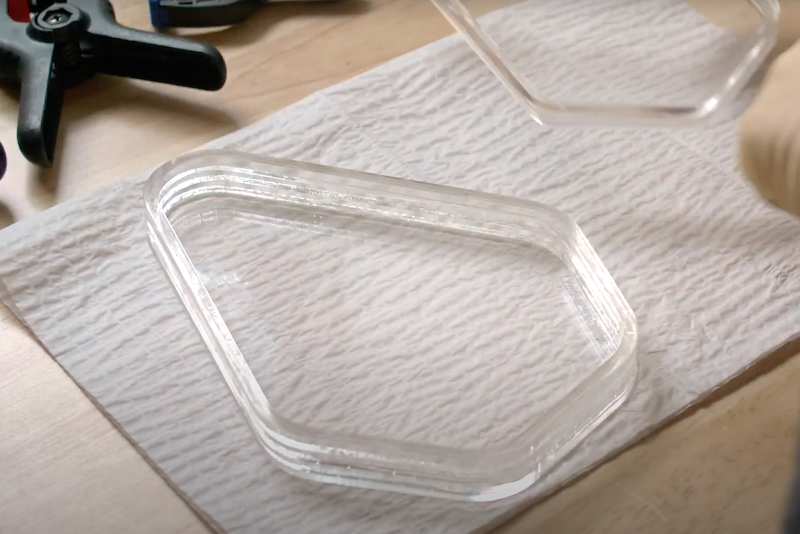You can create stunning works of art with epoxy resin. But you have to use a mould made of a material that the epoxy casting resin won’t adhere to, such as polyethylene. Acrylic is also frequently used to make silicone moulds for epoxy. In this blog, we’re going to explain how to make these moulds.
How to make your own resin moulds from HDPE
HDPE, also called polyethylene (PE), barely adheres to other materials, not even epoxy resin. So it’s a perfect type of plastic for making your own mould for epoxy casting resin. For example, Erik, one of our customers, told us about his idea for an epoxy mould for a cutting board. He constructed the cutting board from food-safe epoxy and pieces of wood. Erik first made a container from 3 mm thick HDPE (shown in the photo below). He then placed the pieces of wood in position and poured the epoxy resin over them.
He then left it to dry for a few days. Because the epoxy resin doesn’t stick to plastic, it’s easy to remove it from the mould. Erik then finished off his project by sanding and polishing the cutting board. In the photo below, you can see the outside of the 3 mm thick epoxy resin mould is fixed with tape. Of course, you can also attach thicker moulds using screws. We recommend sealing the inside of the mould to ensure that it doesn’t leak.
Advantages of an HDPE epoxy mould at a glance:
- The material doesn’t or hardly adheres to epoxy
- Affordable
- You can polish HDPE for a nice shine
- Can be ordered to size
- Available in various colours and thicknesses
Making a silicone mould with acrylic sheet
It’s possible to buy ready-to-use silicone moulds, but you can also make your own mould with acrylic sheet and liquid silicone. In the following video, one of our customers, Tamara, takes you step by step through the process of making a silicone mould using a laser device and acrylic sheet.
Making your own silicone mould
In this demonstration, the acrylic sheet isn’t used in the end product but to make a mould. The sheets are laser engraved and cut. Tamara then constructs a housing around her design and pours liquid silicone onto it. When it’s hardened, you’ve created a mould of your design that you can now use to pour the epoxy in. The engraved parts are visible in the cured epoxy resin.
In the images below, you can see further examples of moulds made by Tamara from acrylic sheet. She constructed them by glueing together several layers of acrylic. We recommend using Acrifix adhesive for glueing this material.
Tip: Would you like to learn more about how to glue acrylic sheet? Visit our blog: Glueing acrylic: everything you need to know.
Would you like to make your own mould for epoxy?
Have we inspired you to make a mould for epoxy resin? You’ll find everything you need in our webshop, including acrylic sheet for making silicone moulds and a wide range of polyethylene. Perhaps you have your own design and would like, for example, to have a shape with an edge milled, as shown in the video? You can upload your design as a DXF file. If you have a question about this blog or our products, please don’t hesitate to contact us.


